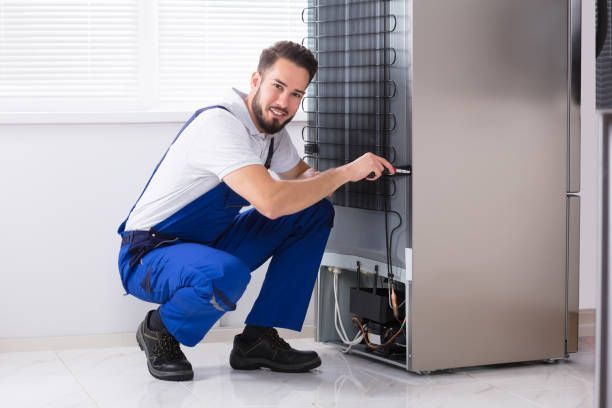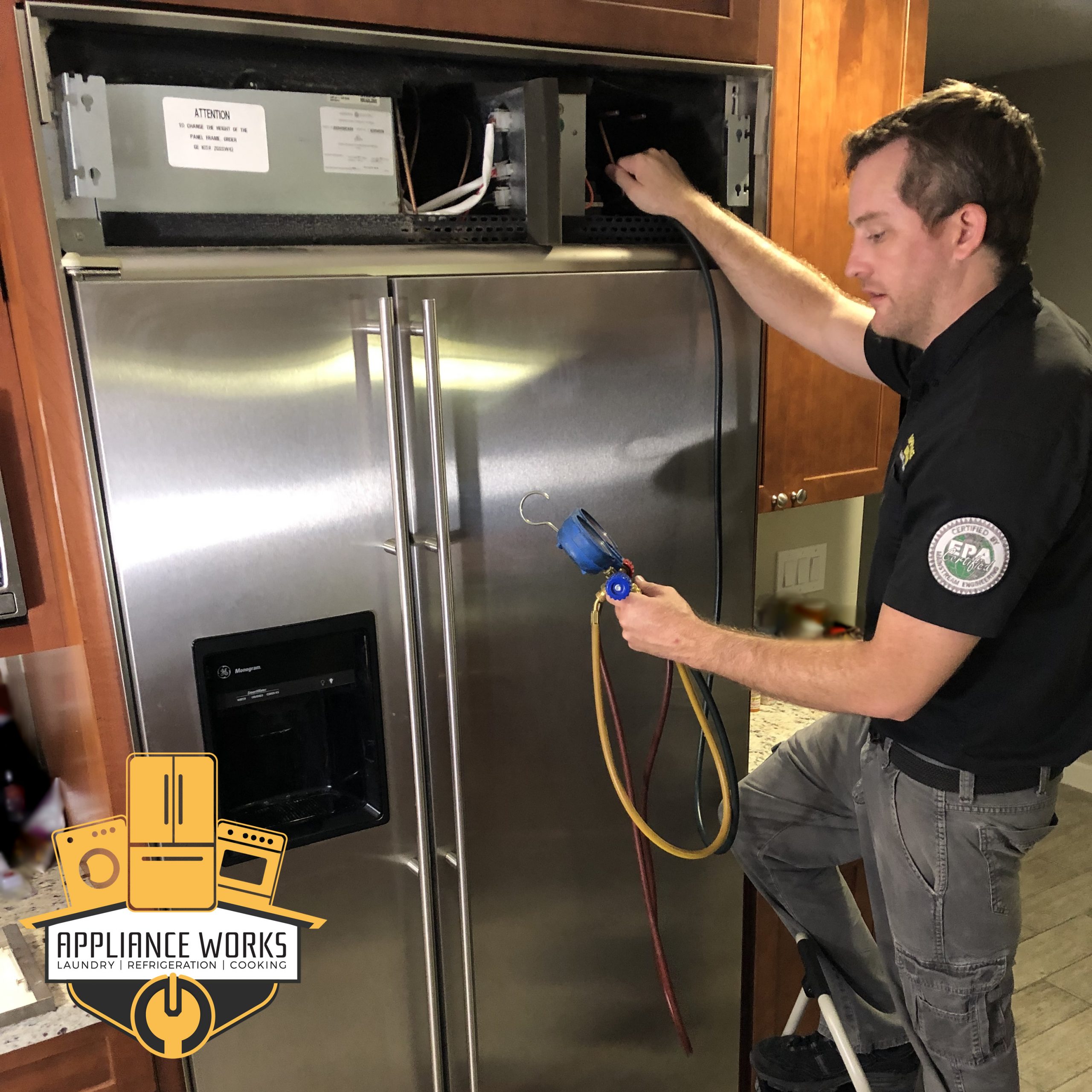The Ultimate Guide to Do It Yourself Device Repair Techniques
From fridges to dish washers, understanding how to fix and repair these gadgets can save you time and cash. Are you all set to find vital strategies that will empower you to manage repair work with confidence?
Recognizing Common Appliance Issues
When you depend on your home appliances, it can be discouraging when they suddenly quit working or act up. Recognizing common device problems can help you troubleshoot issues effectively. If your fridge isn't cooling down, inspect the temperature settings or evaluate the door seal for voids. A defective washing equipment could be because of a clogged up drainpipe filter or a broken belt.
If your oven isn't home heating, defective components or thermostat problems could be to condemn,. Dishwashing machines typically experience problems with water drainage, so ensure the filter is tidy and the drain tube isn't kinked.
Also, pay attention for unusual noises; they frequently show mechanical problems. By identifying these indications, you can conserve time and potentially stay clear of costly fixings. A little understanding goes a lengthy way in keeping your appliances, so remain informed to keep every little thing running smoothly.
Crucial Tools for Do It Yourself Repairs
Before diving right into DIY home appliance fixings, it's essential to collect the right devices to ensure the procedure goes efficiently. Start with a great collection of screwdrivers, including both flathead and Phillips, as they're important for opening most appliances. You'll likewise desire a set of pliers for gripping and twisting cables or small elements.
Do not forget a multimeter; it helps you test electric parts and diagnose issues efficiently. An outlet collection comes in handy for loosening or tightening bolts, while an energy blade can be valuable for cutting wires or opening packaging.
Ultimately, take into consideration having a flashlight accessible to brighten dark spaces inside your home appliances. With these crucial devices, you'll be well-appointed to take on numerous repairs, saving both time and money. So, gather your gear and prepare to roll up your sleeves!
Safety First: Safety Measures to Take
Before you start any appliance repair, it's important to prioritize safety. Make sure you wear personal safety tools, separate the source of power, and keep your work area arranged. These straightforward preventative measures can assist stop mishaps and guarantee a smoother repair procedure.

Personal Protective Devices
Security gear is an essential component of any kind of DIY appliance fixing project. Steel-toed boots are additionally a wise option, specifically when lifting heavy appliances. Bear in mind, being prepared with the ideal gear maintains you risk-free and focused on finishing your repair service successfully.
Source Of Power Disconnection
To guarantee a secure DIY device repair service, disconnecting the power resource is necessary. Before you begin any job, you ought to turn or disconnect the appliance off the breaker. This easy action avoids electrical shocks and assurances that you can concentrate on the repair work without bothering with accidental activation. Constantly verify that the home appliance is off by testing it with a voltage tester. If you're taking care of bigger home appliances, like a washing machine or dryer, make sure to safeguard the power cord and prevent any kind of contact with water. Keep in mind, safety and security first! Once you're confident that the power is detached, you can with confidence wage your repair work, recognizing you have actually taken the necessary safety measures to shield yourself.
Workplace Organization
An efficient work location can make all the difference in your Do it yourself home appliance fixing job. Start by clearing your workspace of mess to prevent mishaps and interruptions. A clean space not just boosts effectiveness but likewise maintains you risk-free while you function on your appliance fixing.
Step-by-Step Guide for Fridge Repairs
When your refrigerator starts acting up, it can be frustrating, yet dealing with the problem yourself can conserve you time and money. Check for common issues like temperature variations or uncommon sounds. For a noisy fridge, examine the fan and validate it's not obstructed.
If there's water merging within, examine the door seals for damage or dirt, and tidy them if necessary. For ice build-up, clear the defrost drain. Connect the fridge back in and monitor it for a few hours once you have actually resolved the concern. If the problem persists, you may need to replace a faulty component, like the compressor or follower electric motor. Keep in mind, don't hesitate to seek advice from the handbook or seek professional aid if required.
Repairing Washing Equipment Problems
Just like refrigerators, cleaning makers can offer their very own collection of challenges, but numerous problems can be solved with a little bit of troubleshooting. If your maker will not begin, inspect the power cable and validate it's connected in.
If your garments aren't obtaining tidy, take into consideration the water degree and cleaning agent kind; making use of excessive cleaning agent can produce excess suds, affecting performance. For leaks, examine the hoses for cracks or loose links. Tightening up these can often solve the problem. Normal upkeep, like cleansing the filter, can stop lots of problems from occurring. More hints Keep in mind, a little troubleshooting goes a long way in maintaining your cleaning maker running efficiently.
Troubleshooting Ovens and Cooktops
How can you troubleshoot typical issues with your stove or oven? Start by checking the power supply.
If your oven isn't heating, examine the temperature level settings and validate the door seals firmly. A damaged burner might additionally be the culprit; you may require to change it if it's damaged.
For uneven cooking, rotate your pans and take into consideration using a stove thermostat to verify precise temperatures. Lastly, if you listen to unusual noises or scent gas, shut off the home appliance right away and speak with a specialist. By adhering to these steps, you can recognize and solve many common stove and oven issues successfully.
Repairing Dishwashers Facilitated
When your dishwashing machine begins breaking down, it her comment is here can be frustrating, yet resolving common issues isn't as difficult as it seems. You'll discover detailed troubleshooting approaches that will help you determine the trouble, along with the vital devices you'll require to tackle repair work on your own. Allow's make repairing your dishwasher a breeze!
Typical Dish Washer Issues
While dishwashing machines are made to make your life simpler, they can often encounter usual issues that leave you feeling discouraged. One frequent trouble is inadequate cleaning efficiency; this usually takes place as a result of clogged up spray arms or unclean filters. You could additionally see water merging at the base, which can show a kinked pipe or a damaged drainpipe. It could be a simple issue with the latch mechanism or door seal if your dish washer's door will not latch. Furthermore, unusual noises can signal damaged parts or loose parts. Lastly, if you smell something strange, it may be time to look for food particles or a malfunctioning electric motor. Addressing these concerns early can conserve you time and trouble down the road (Dependable Refrigeration & Appliance Repair Service Sub-Zero Appliance Repair).

Detailed Troubleshooting
Before diving right into repair services, it's important to recognize the certain issue your dish washer is dealing with. If it's not cleaning effectively, Start by inspecting. Inspect the spray arms for blockages and warranty they spin openly. If it's leaking, check out door seals and hoses for any type of damages. For weird noises, listen carefully throughout cycles; foreign items could be stuck in the filter or impeller. If your dishwashing machine will not begin, check the power supply and door latch. Do not neglect to consult your user handbook for repairing tips particular to your version. By methodically attending to each possible concern, you can pinpoint the issue and take the needed actions to repair it, making your dishwasher function like new once more.
Necessary Fixing Tools
Having the right tools at your disposal can make all the distinction when fixing your dish washer. Do not fail to remember a bucket or towels for any type of water spills during repair work.
If you're tackling obstructions, a drain serpent or a wet/dry vacuum will certainly be important. You could likewise desire a level to ensure your dishwashing machine's effectively straightened. Safety and security gear like safety glasses and gloves will certainly protect you while you function. With these check my site vital devices, you'll be fully equipped to take on any type of dish washer repair service obstacle that comes your method.
Frequently Asked Concerns
Just how Do I Determine if a Home Appliance Deserves Fixing?
To identify if a device's worth fixing, consider its age, repair expenses, and present worth. If fixings exceed half the replacement expense, you may desire to purchase a new model instead.
Can I Discover Replacement Parts Locally for My Device?
Yes, you can often locate substitute parts locally for your appliance. Check equipment shops, home appliance repair work shops, or local classifieds. Do not fail to remember to bring the design number to guarantee you obtain the proper component!
When Fixing Home Appliances?, what Common Mistakes Should I Stay Clear Of.
When fixing appliances, avoid hurrying with diagnostics, disregarding safety preventative measures, or utilizing incorrect devices. Do not skip reviewing handbooks or viewing tutorials; they provide crucial support. Hold your horses and extensive to guarantee effective repair services and avoid further damages.
How much time Does a Normal DIY Device Repair Service Take?
A typical do it yourself appliance fixing generally takes one to 3 hours, depending upon the intricacy. You'll intend to gather your materials and devices first, and follow guidelines very carefully to avoid unnecessary hold-ups.
Are There Any Type Of Service Warranties for DIY Device Repair Works?
When you take on do it yourself home appliance fixings, warranties commonly don't cover your job. Some manufacturers may recognize service warranties for parts you replace. Always inspect your device's warranty terms before starting any type of fixings to avoid issues.
Before diving right into Do it yourself appliance repairs, it's essential to collect the right devices to assure the process goes smoothly.Before you start any type of device repair, it's vital to prioritize safety.To assure a safe DIY appliance repair, disconnecting the power source is important.A well-organized work area can make all the difference in your DIY appliance repair work project. Always check your appliance's warranty terms before beginning any kind of fixings to stay clear of concerns.